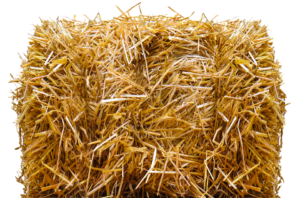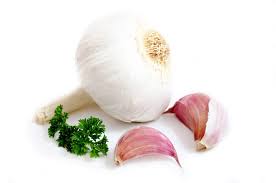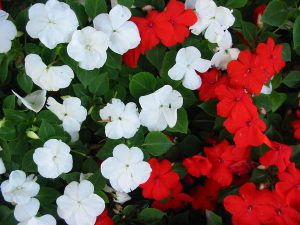Straw Bale Gardening Beginner’s Guide

Strawbale gardening or hay bale gardening is not new this method of growing plants has gained popularity over the years and has proven to be beneficial in so many ways. Below we will be discussing how to install a straw bale garden along with the advantages and disadvantages of these garden types.?
How to construct a straw bale gardening?
What you will need.
- Straw Bale
- Seeds
- Seedlings
- Potting mix
- Fertilizers
- Trowel
- Compost
Let’s get started
You have brought your bale of straw and are now set to go, where do you go from here? here is what to do, it has been suggested that before you install your straw bale it’s best to wrap the plastic preferably black around the straw bale for about a month or thereabout to kill weed seeds that may be trapped and are waiting for the right condition to germinate. Avoid hay bales that break down rather rapidly and are filled with weed seeds.
Once you’ve taken this step and the time comes to set up your straw bale remove the plastic wrap. The bales should be placed in the full sunlight and next to or near a water source, When laying your straw bale they can be installed either like a raised bed garden or can be placed in rows.
Wet straw bails can become pretty heavy so ensure they are in the right place so you don’t have to move once installed. Once the bales are in place here is what to do.
Week 1
- Gave the straw bale plenty of water, and continue to add water until the water runs out of the bottom. The goal of adding this amount of water is so that your bales can begin to decompose.
- Add a water-soluble fertilizer to your straw bale, the straw bale should be soaked every day for about 1 week or thereabout. A fertilizer that has a high nitrogen source will help along in speeding up the process of decomposition
- Continue to apply fertilizers every few days ensuring that the bales are soaked
- Keeping straw bales soaked with water will speed up decomposition
Note you can plant your crops from seeds or seedlings.
Week 2
- Sprinkle each straw bale with ammonium sulfate the numbers on the bag should be 21-0-0
- Do this for about 3 days
- On top of the bales add compost and potting mixture
- This potting mixture should be 3 inches thick
- Now plant your seeds or seedlings in the potting mix, the use of a trowel will make it easy to dig the hole.
- If planting seeds follow the direction of planting depth that is on the seed package because planting too deeply will cause seeds not to germinate.
- Seedlings should be installed at the seam depth as they sat in the nursery container.
Installing tomatoes
When installing tomatoes the use of strong stakes to support these climbers is a must, thrust the stakes through the straw bale and into the ground to stabilize. The use of dwarf tomatoes is great when planting this type of garden. Some dwarf tomato includes Golden Dwarf Champion, Dwarf Sweet Sue, Dwarf Mallee, Boronia Dwarf Tomato, etc…
Additional information
- Once your crops are grown and harvested the straw bale can be turned into compost and used as soil when the growing seasoning starts again
- Don’t use hay bale because even though it may be cheaper hay bale contains more weed seeds
- Water your straw bale garden during the morning hours to avoid the heat
- When applying water ensure that the water is making contact with your straw bale and not the plant leaves.
Here are just a few of the best plants to install in a straw bale garden
Vegetables and Fruits

- Tomatoes
- Cucumbers
- Zucchini
- Strawberries
- Peppers
- Lettuce
- Eggplants
- Potatoes
- Spinach
- Squash
Herbs

- Chives
- Garlic
- Cilantros
- Basils
- Parsely
- Dill
- Kale
Best flowering plant to install in a straw bale garden

- Impatiens
- Celosia
- Merigold
- Begonias
- Geraniums
- Zinnias
- Petunias
- Dianthus
The advantages of straw bale gardening
1. No soil-borne disease.
2. Acts as a natural raised bed.
3. The cost of maintaining these gardens is low.
4. Weeds can be more manageable.
5. These garden types are popular for being constructed in small spaces.
6. No soil is needed which is great especially if you have poor soil.
7. Makes garden work a lot easier, for example, no need to worry about having back pain.
8. These materials attract worms which will give worm casting.
The disadvantage of straw bale gardening
1. Even though hand weeding is more manageable weeds still may be a problem because the seeds may be present in hay bales or wheat straws so be on the lookout for weeds and pull as soon as spotted.
2. To keep straw or hay moist requires lots of water.
3. Nitrogen and other nutrients are needed because with this garden type the nutrient content is low.
4. Straw bales can be expensive.
5. Straw bales can fall apart.
The final word on straw bale gardening
Strawbale gardening is here to stay, this garden method will make your time outdoors so much easier. Though there are some downsides to this garden the positive side will give you good results as you grow and harvest your food crops. What I love about these garden types is once your crops have grown and are harvested the straw bale can be used as compost for your next garden projects. Many homeowners are taking advantage of these gardens that have become popular, you can be the next homeowner with your very own straw bale garden so get in on the action and experience how great it is growing your food crops with this garden type.
About the author
Norman loves being in the garden, both at home and for his job....
he is 'Natures Little helper' being outdoors, growing his vegetables and flowers from an early age.
Now having spent over 22 years in the profession he want to give some of his knowledge to others...
his vast array of hints and tips you will find scattered over this site will help you no end growing plants in your garden.

I have never heard of this way of gardening before. Hubbie is at the moment out in the garden, planting his seedling and when he comes in I will show him this post. We have a polytunnel and some raised beds but are always looking for other alternatives to increase our production. We are trying to become self sufficient, especially now as we are in deep lockdown because of the virus. I think I will print this article, it’s much easier to read and take with me for reference.
Thank you for this post, it has been enlightening and such a fortuitous time to have another way of growing our produce.
Sustaining oneself is so important and gardening is a method whereby this can happen. It is so good to know that there are so many ways to grow food crops the straw bale gardening being one of them. So happy to help and wishing you the best with your gardening projects.
I am an avid gardener and we grow many of our own vegetables during the summer, specially tomatoes, green beans and zucchini. I have never really been successful with cucumber as they tend to be very bitter, but I have never tried or thought of growing them in straw bales.
I am curious to know what the purpose is of the ammonium sulfate that gets added to the straw bales in week 2? Would that mean it is not an organic growing medium? I’d like to hear your thoughts on it.
The use of ammonium sulfate 21-0-0 will help in speeding up decomposition setting things in order or helping to prepare the bales for successful crop growth. Hope this helps.
Great article, we need to start looking at better ways to sustain ourselves as a society and learning to garden and crop your own foods is a great start, Your articles are educational and informative giving novice great insight to gardening.